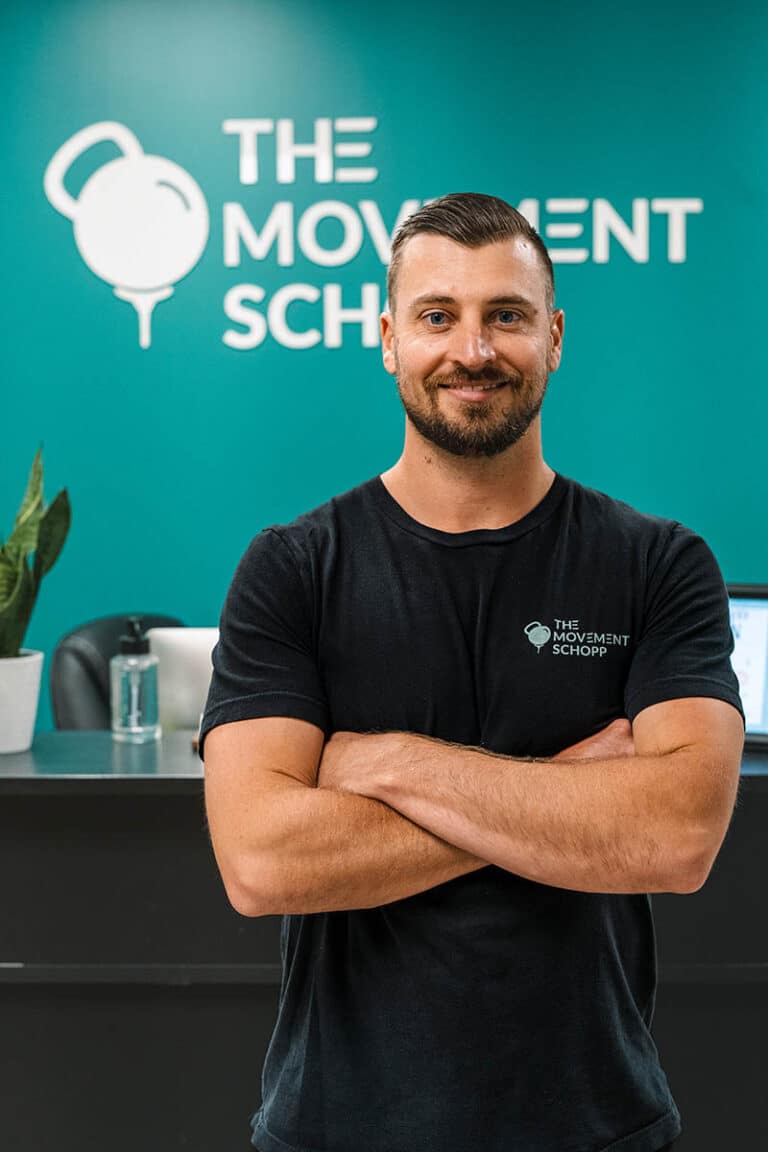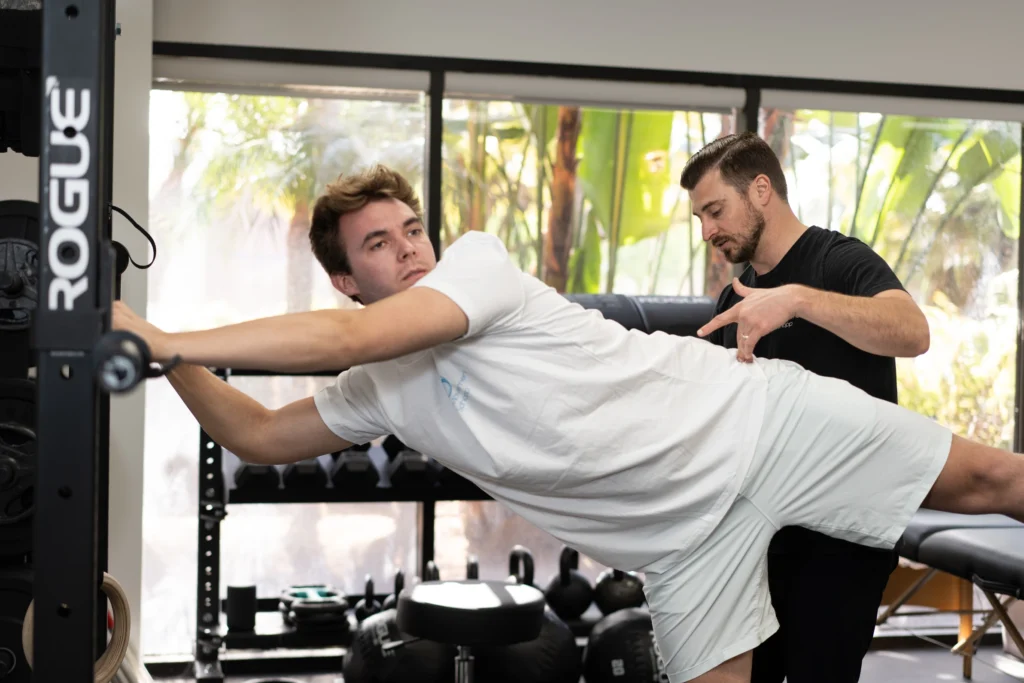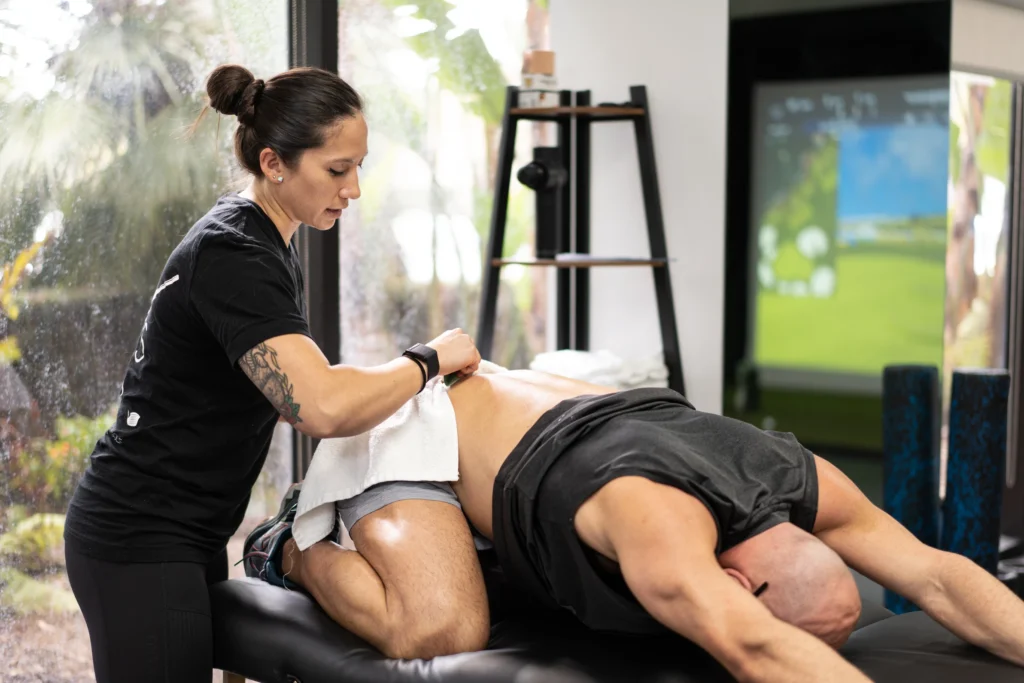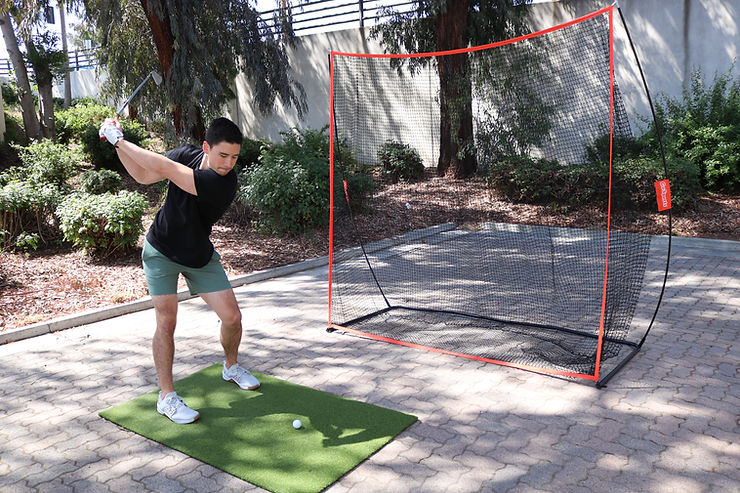Introduction
Golf may not seem as physically demanding as other sports, but it requires strength, flexibility, and endurance. Golf back injury is one of the most common complaints among professional and amateur golfers. It is estimated that 62% of all golfers will experience a golf-related spine injury at some point in their careers.
This comprehensive guide aims to navigate you through the prevention, immediate care, and rehabilitation of back injury from golf, ensuring your swift and safe return to the sport.
Anatomy of the Back Relevant to Golf
The human back is a complex structure composed of bones, joints, muscles, and ligaments. The spine, central to the back’s anatomy, consists of 33 vertebrae cushioned by intervertebral discs that act as shock absorbers. Muscles and ligaments support the spine, enabling flexibility and movement.
For golfers, the back is instrumental in providing the power and rotation necessary for the swing, making it susceptible to injury if not properly cared for. Notably, the lower back is one of the most common sites of injury in golf, accounting for 25% of all golf-related injuries.
Common Golf Back Injuries
Lumbar Strains and Sprains
Lumbar strains and sprains are among the most common golf injuries in the back. It is caused by overstretching or tearing the muscles and ligaments in the lower back. Symptoms include pain, stiffness, and muscle spasms, often worsen by movement and relieved by rest.
Disc Herniations
Disc herniations occur when the inner gel-like core of an intervertebral disc protrudes through its outer layer, pressing on nearby nerves. Symptoms include sharp, localized pain in the back or neck, radiating numbness, and weakness along the affected nerve pathway.
Spondylosis
Spondylosis refers to the degenerative changes in the spine, such as disc wear and bone spurs, often due to aging. Golfers may worsen these conditions through repetitive motion and improper body mechanics. Symptoms include chronic back pain, decreased range of motion, and stiffness, particularly in the morning or after prolonged activity.
Facet Joint Syndrome
Facet joint syndrome is caused by the deterioration or inflammation of one or more of the spinal facet joints. This condition leads to localized discomfort, pain during specific movements, and a loss of flexibility in the lumbar spine.
What Causes Golf Back Injuries?
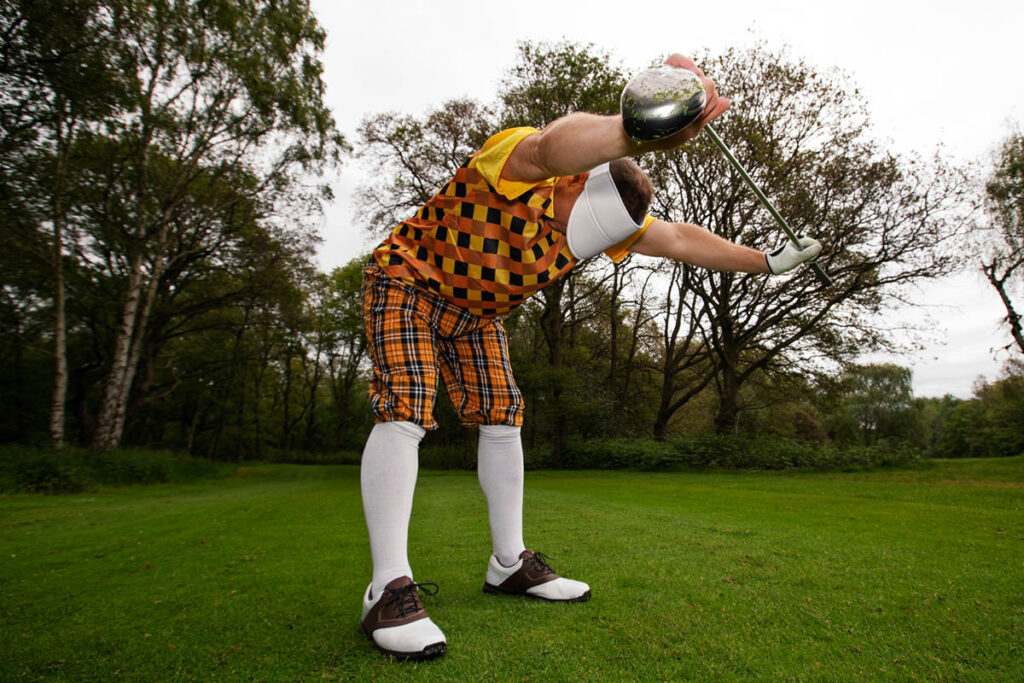
Improper Swing Techniques
The golf swing is a complex motion requiring coordination, strength, and flexibility. Incorrect swing mechanics, such as over-swinging, poor posture, or misalignment, especially when handling the golf club can place unnecessary stress on the back. These technical flaws can lead to muscle strain and injury over time, especially in the lumbar region, which bears the burden of rotational forces.
Lack of Warm-Up and Flexibility
Skipping a proper warm-up and having limited flexibility can significantly increase the risk of back injuries. A warm-up routine prepares the muscles for the activity ahead. At the same time, flexibility enhances the range of motion, allowing for a smoother swing.
Golfers with restricted flexibility are more prone to strains as their muscles and joints are less able to absorb and adapt to the dynamic movements of the game.
Overuse and Fatigue
The pursuit of perfection in golf often leads players to practice extensively. However, overuse and fatigue weaken the body’s defenses against injury. Repeated swings and prolonged play without adequate rest can lead to muscle fatigue, which diminishes the support for the spine, making it a risk factor for injury.
Initial Steps After Golf Back Injury Occur
RICE Method (Rest, Ice, Compression, Elevate)
Immediately after sustaining a golf back injury, the RICE method is a valuable first-aid response:
- Rest: Avoid movements and activities that worsen the pain.
- Ice: Apply ice packs to the injured area for 15-20 minutes every few hours to reduce swelling.
- Compression: Use a back support brace if necessary to help minimize movement and provide support.
- Elevate: While it’s challenging to elevate the back, maintaining a reclined position can help.
Pain Management
Managing pain is important in the initial stages of a back injury. Over-the-counter pain relievers and anti-inflammatory medications can be effective. Natural remedies, such as heat therapy or gentle massage, may also provide relief. It’s important to consult a medical professional before starting any medication.
When to See a Healthcare Professional
Seek medical advice if there is severe pain, persistent, or accompanied by symptoms such as numbness, tingling, or weakness. A health care professional can diagnose the lower back golf injury and recommend the best course of action, including rest, medication, or further interventions like physical therapy.
Rehabilitation Strategies
Rest and Recovery Phase
The first step in rehabilitation is to allow the body to heal. This phase involves resting and avoiding activities that stress the back. The duration of rest varies depending on the severity of the injury, but is important to prevent further damage.
Physical Therapy Exercises
Strengthening and Flexibility Exercises
Once the acute phase is over, gentle strengthening and flexibility exercises can help restore function and reduce pain. Exercises may include:
- Stretching routines for the hamstrings, hip flexors, and lower back to improve flexibility.
- Strengthening exercises focusing on the core, lower back, and glutes to provide better support for the spine.
Core Stabilization
Core muscles act as a natural corset for the spine. Strengthening these muscles through exercises like planks, bridges, and abdominal workouts can significantly improve stability, address muscle imbalances, and reduce the risk of future golf-related injuries.
Advanced Rehabilitation Techniques
As recovery progresses, incorporating advanced techniques can expedite healing:
Yoga
Yoga, with its emphasis on flexibility, strength, and balance, is an excellent tool for rehabilitating back injuries. Specific poses can target the back’s muscles, gently stretching and strengthening them, which helps relieve pain and improve mobility.
Pilates
Pilates is renowned for its focus on core strength, posture, and alignment, which are important for a healthy back. By strengthening the core muscles, Pilates helps support the lower back, reducing the risk of further injury risk and enhancing the body’s overall stability and balance.
Aqua Therapy
Aqua therapy, or water therapy, is another beneficial approach, especially in the initial stages of rehabilitation when movements may still cause pain. The buoyancy of water reduces stress on the back by supporting the body and decreasing the impact of movements. Exercises designed for aqua therapy can improve flexibility, strength, and endurance without the added strain on the back.
Returning to Golf After Back Injury
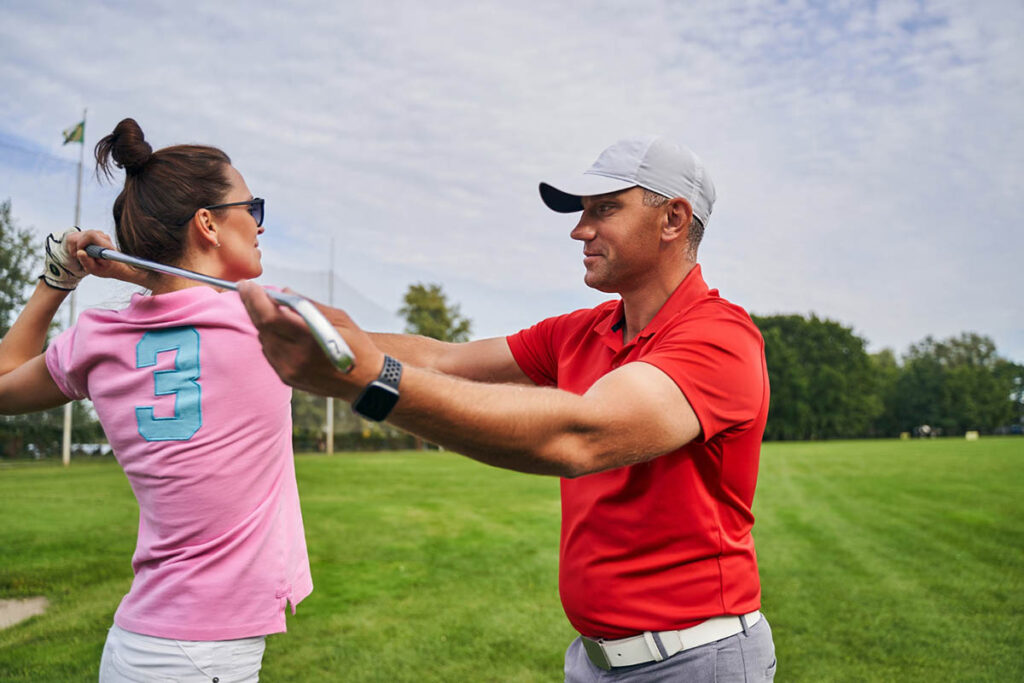
Gradual Return to Play
Rushing back to the game can lead to re-injury. Gradually reintroducing golf activities before advancing to full swings is important. Listen to your body and increase intensity slowly.
Tips to Prevent Golf-Back Injury
- Warm-Up Before Playing: A comprehensive warm-up, including dynamic stretching and practice swings, is an essential part of your golf routine. This prepares the muscles and joints for the game and can reduce the risk of injury.
- Check Your Swing Mechanics: Working with a golf professional to ensure proper swing mechanics can prevent unnecessary stress on the back. Focus on posture, alignment, and smooth, controlled movements.
- Minimize Over-Rotation: Limiting excessive spinal rotation during the swing helps protect the back. Concentrate on rotating the hips and shoulders in harmony to reduce strain.
- Play Moderately and Take Breaks: Balance is key in preventing overuse injuries. Play moderate rounds and take breaks, especially if you start to feel fatigued or sore.
Experiencing Back Pain from Golf Back Injury? Consult The Movement Schopp
For those struggling with back pain from golf, specialized rehabilitation services like The Movement Schopp offer tailored programs to address and correct the underlying issues. These professionals can provide personalized care plans, including physical therapy for golf and exercises designed to get you back on the course safely and effectively.
Conclusion
Golf back injuries can be a significant setback, but with proper care, rehabilitation, and preventive measures, amateur or professional golfers can return to enjoying their game. Remember, prevention is always better than cure. By understanding the risks and taking steps to protect your back, you can enjoy a long and healthy golfing career.
FAQs
Why does my back hurt after golfing?
Back pain after golfing is typically due to overuse, improper swing techniques, or lack of flexibility and warm-up, leading to strains, sprains, and other injuries.
Is golf OK for a bad back?
Golf can be suitable for people with back issues if modifications are made to the swing mechanics and proper preventive measures are taken, including warm-ups and using equipment that reduces strain.
How long does it take for a golf back injury to heal?
The healing time for a back injury golf varies depending on the severity and type of injury. Minor strains may heal within a few weeks, while more serious conditions like disc herniations may require months, alongside a comprehensive rehabilitation program.

